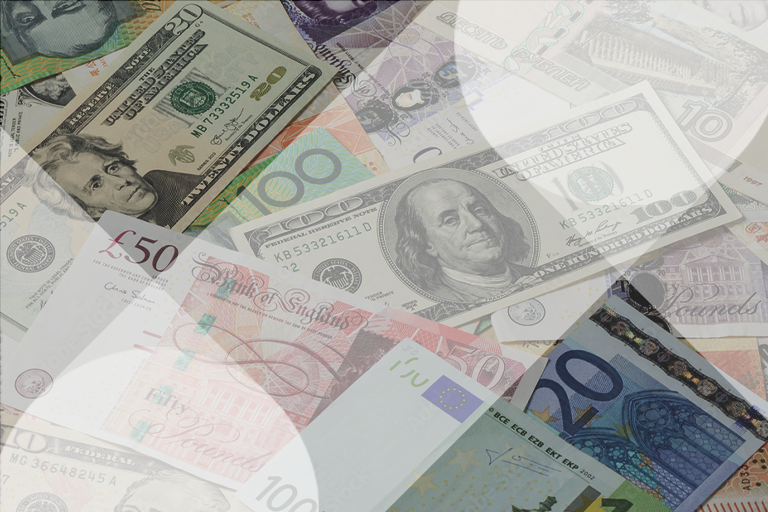At the end of the day, everything we do as marketers—sending direct mailers, creating email campaigns, sending push notifications—is meant to move customers through the funnel to a purchase. But, there are strategies we can use to increase the value of each order a customer places while establishing and maintaining strong relationships.
Average Order Value (AOV) is the total order dollar amount in a given timeframe divided by the total number of customers in the same timeframe. So, for example, if in one year you have total sales revenue of $5,000 and 100 customers, your AOV for the year is $50. Increasing AOV is important because the higher the AOV, the more money you’re getting from each individual customer and, as a result, each customer’s inherent lifetime value increases.
But, before we do a full-blown AOV deep-dive, we have to point out, as Shopify mentions, that AOV isn’t a perfect calculation. Relying on just the average, without also looking at the median (middle number) and mode (most frequently occuring number), only gives your brand a small view of customer behavior.
In the example Shopify provides, a business has an AOV of $24 but modal orders are $15—meaning the majority of the orders were $15. Aiming to increase the modal orders, rather than focusing on the average, could actually impact the bottom line more. Say the modal orders increase to $20, you’re adding more total value while just one higher value order can skew the average.
But, AOV is still a valuable metric for keeping track of orders. So, let’s look a bit deeper into some ways marketers can increase AOV.
1. Try Free Delivery Thresholds
Let’s start with the basics. As a customer, when you’re building an online order and head to the checkout page, the delivery fee can stop you from placing that order. “56% of shoppers abandon their online shopping carts when they encounter unexpected costs.” But, if there’s a way to remove the delivery fee, by adding a price threshold—free shipping when you spend $X—it’s, for some reason, more appealing. You, as the consumer, are spending around the same amount of money (or maybe even more), but the money is now contributing to the order value versus being spent on shipping.
According to Wharton, “Approximately 60% of online retailers cite ‘free shipping with conditions’ as their most successful marketing tool.” One reason for the success of free shipping, even with a price threshold, is that it justifies the online purchase. With a shipping charge, customers are more likely to abandon their cart, saying they can pick up the item in-store to avoid the unexpected cost. If there’s no shipping cost, but more items are added to the order, it helps ease customer concerns about additional fees, increasing AOV.
2. Implement Cross-Channel Marketing
Next, we have cross-channel—or omnichannel—marketing as a method for increasing AOV. A quick refresher: cross-channel marketing is connecting with customers across various marketing channels. These channels can include SMS, email, push notifications, etc. The key to a successful cross-channel marketing strategy is making the experience seamless for customers. For instance, changing the content that gets delivered via each channel to increase the likelihood of engagement.
But, back to AOV. When customers have the opportunity to interact with a cross-channel campaign, they actually end up purchasing orders of higher value. According to Retail Dive, “The average order value (AOV) of customers interacting with a single-channel campaign spent only $58.70 on average, while omnichannel campaigns earned a 13% higher AOV.” There’s a personalized aspect to cross-channel campaigns that show your brand is paying attention. When you can cater to the needs of your customers by connecting with them how they want to be reached, it increases retention and builds trust, resulting in higher average order value.
3. Lift AOV with Gamification
We’ve touched a bit on gamification and how adding an element of “play” to the buying process can improve the overall experience, but how does it increase AOV? Neil Patel uses McDonald’s as a perfect example. During their Monopoly campaign, McDonald’s offers peel-off game pieces that can be combined for prizes. A larger order (physically, and price-wise) means more stickers, which means more chances to win.
In an online world, adding less-literal elements of gamification can help encourage check-out. Amazon, for example, uses a progress bar to show what the steps are in the checkout process so shoppers can see how much longer it will take to complete their purchase.
Upon checkout, DoorDash, the food delivery app, now provides a DoubleDash option. If there’s a restaurant on the driver’s route, customers can add items from other restaurants to their order. The experience is gamified because once the original order is placed, there’s a timer counting down the minutes users have left to add other restaurants their order. The timer encourages customers to take advantage of the deal, increasing AOV.
Customer Experience is Key for Increasing AOV
The common denominator in free shipping promos, cross channel marketing, and gamification is reducing friction in the customer experience. Customers want to have confidence in the brands they are shopping with and in each of these strategies, brands are aiming to build trust and establish customer relationships.
So, while increasing AOV is beneficial for tracking your brands’ success, it shouldn’t be the primary goal. By keeping your customers’ needs and wants top-of-mind and striving to create a frictionless customer experience, it’s likely average order value will increase as a result.
To learn more about building a frictionless customer experience, schedule an Iterable demo today.






























